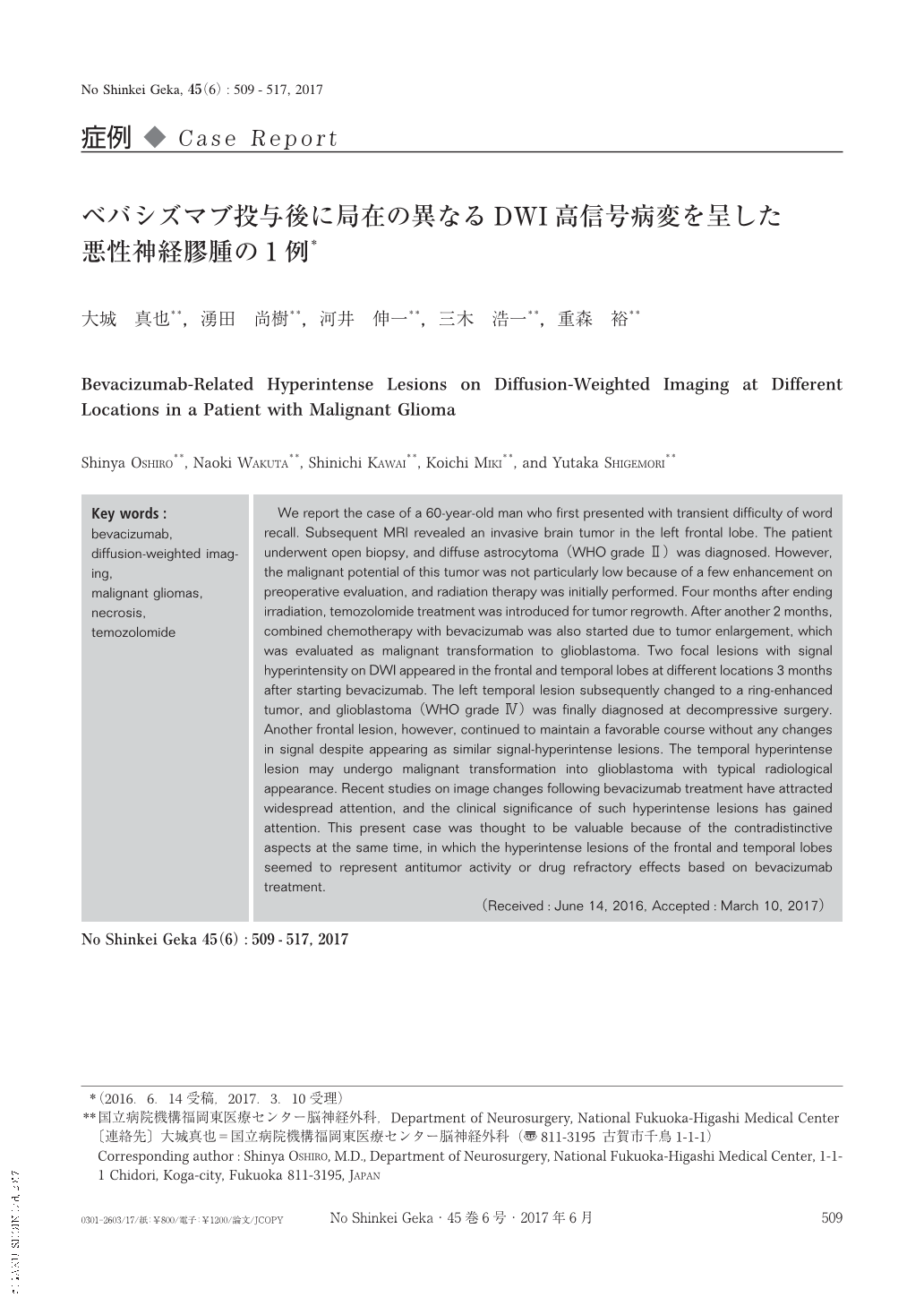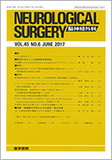Japanese
English
- 有料閲覧
- Abstract 文献概要
- 1ページ目 Look Inside
- 参考文献 Reference
Ⅰ.はじめに
悪性神経膠腫においては,テモゾロミドを併用した標準的な放射線化学療法に加えて,ベバシズマブやカルムスチンといった新しい薬剤が使用される機会が増えてきている8,9,14).このような抗腫瘍治療の進歩に伴い,治療後の画像変化も複雑化してきており,治療効果を含めた画像変化の特徴やその臨床的意義を詳細に判断しなければならない診療体制へと変わりつつある5,6).今回われわれは,悪性神経膠腫に対するベバシズマブ投与3カ月後から,前頭葉と側頭葉の浸潤領域内で,拡散強調画像(diffusion-weighted imaging:DWI)にて局在の異なる孤立性の高信号病変が出現したが,同じ病巣内にもかかわらず前頭葉と側頭葉病変では異なる臨床転帰を示した.経過中に出現したDWI高信号病変の臨床的意義を中心に報告する.
We report the case of a 60-year-old man who first presented with transient difficulty of word recall. Subsequent MRI revealed an invasive brain tumor in the left frontal lobe. The patient underwent open biopsy, and diffuse astrocytoma(WHO grade Ⅱ)was diagnosed. However, the malignant potential of this tumor was not particularly low because of a few enhancement on preoperative evaluation, and radiation therapy was initially performed. Four months after ending irradiation, temozolomide treatment was introduced for tumor regrowth. After another 2 months, combined chemotherapy with bevacizumab was also started due to tumor enlargement, which was evaluated as malignant transformation to glioblastoma. Two focal lesions with signal hyperintensity on DWI appeared in the frontal and temporal lobes at different locations 3 months after starting bevacizumab. The left temporal lesion subsequently changed to a ring-enhanced tumor, and glioblastoma(WHO grade Ⅳ)was finally diagnosed at decompressive surgery. Another frontal lesion, however, continued to maintain a favorable course without any changes in signal despite appearing as similar signal-hyperintense lesions. The temporal hyperintense lesion may undergo malignant transformation into glioblastoma with typical radiological appearance. Recent studies on image changes following bevacizumab treatment have attracted widespread attention, and the clinical significance of such hyperintense lesions has gained attention. This present case was thought to be valuable because of the contradistinctive aspects at the same time, in which the hyperintense lesions of the frontal and temporal lobes seemed to represent antitumor activity or drug refractory effects based on bevacizumab treatment.

Copyright © 2017, Igaku-Shoin Ltd. All rights reserved.


